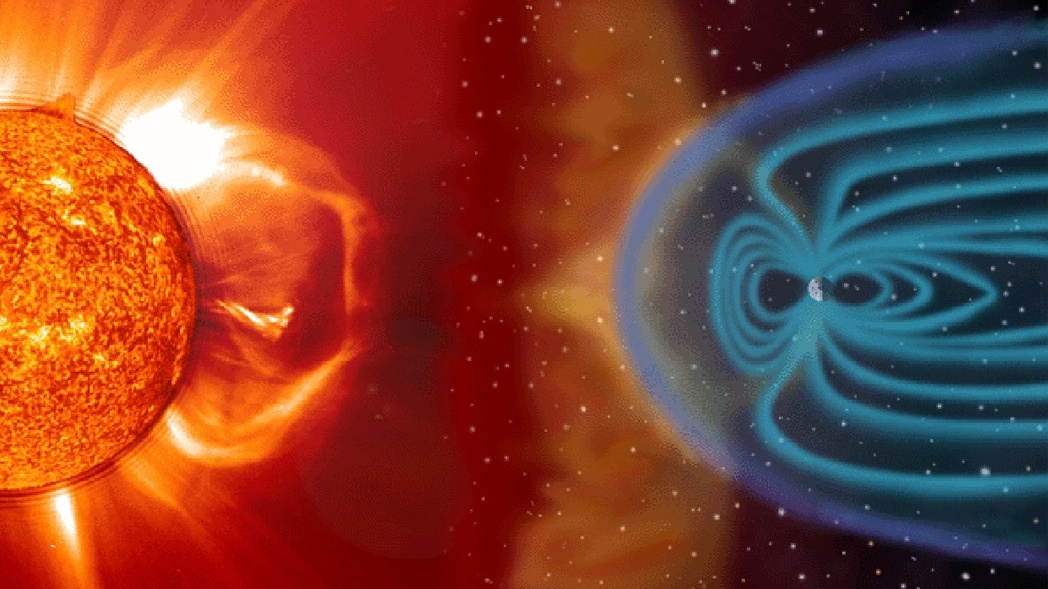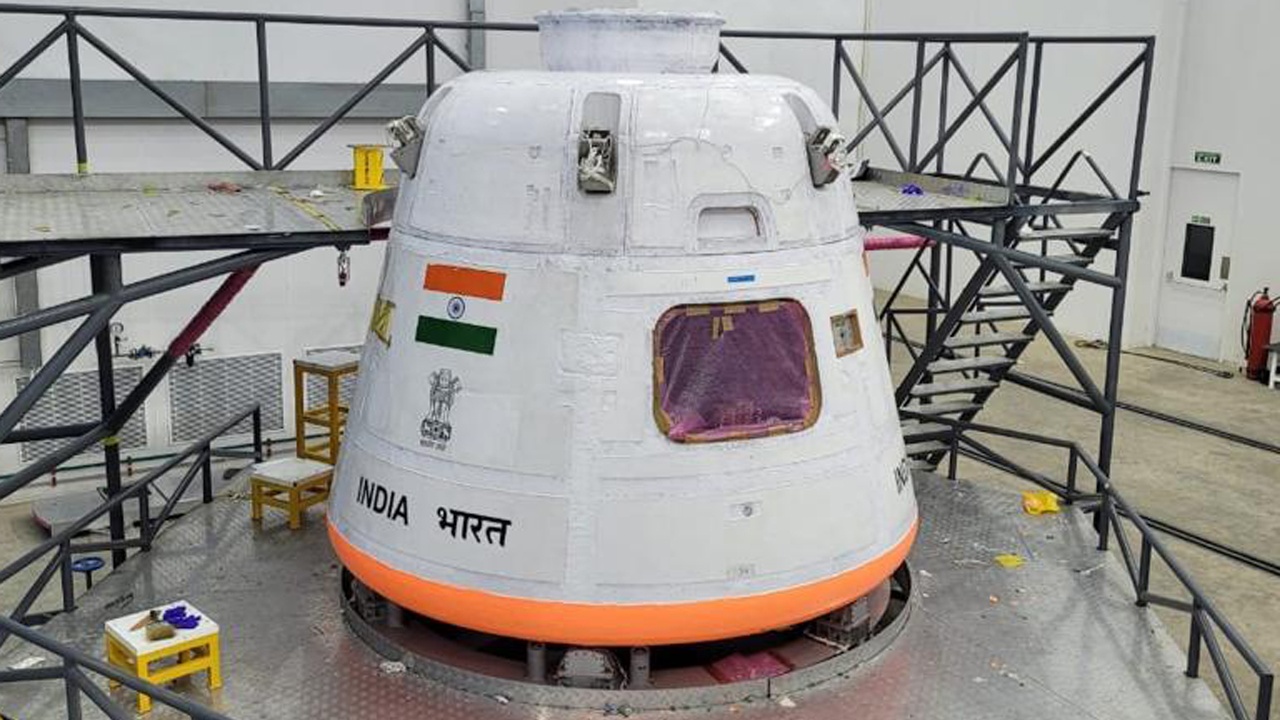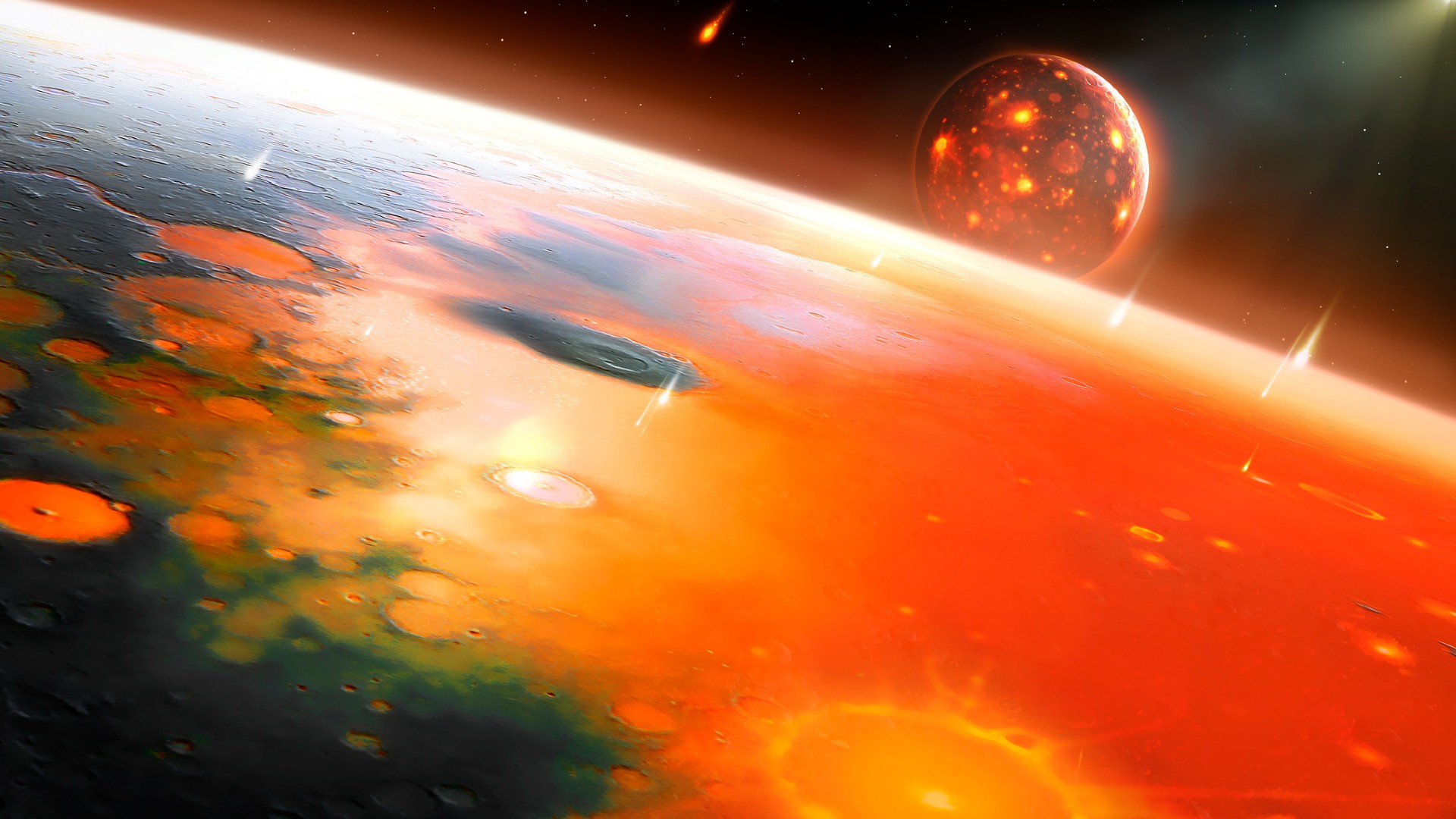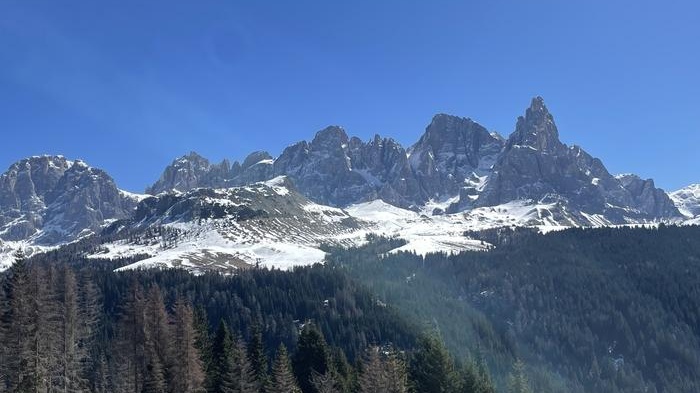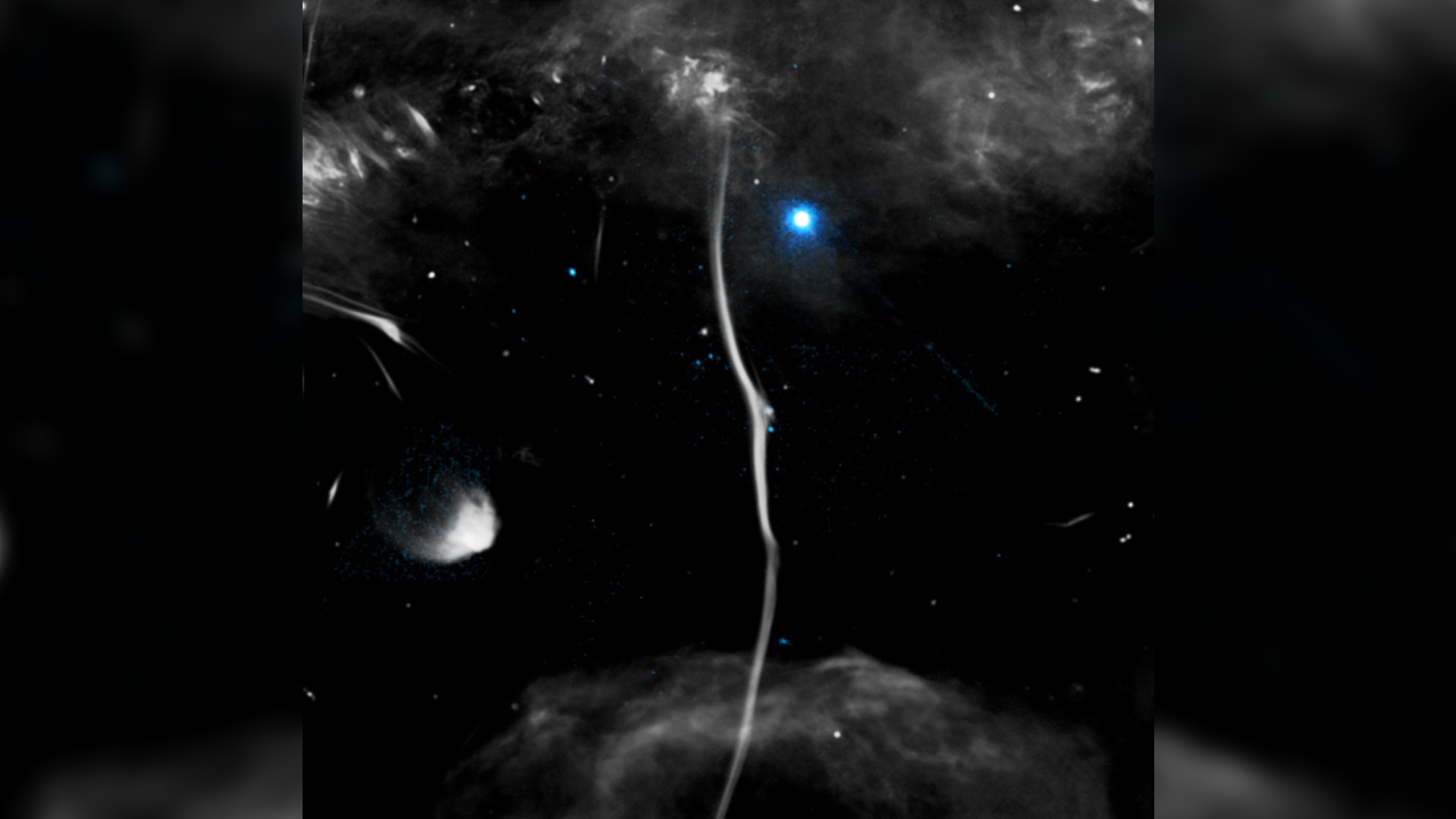Turtle the Size of 2 Earths: Stunning Sunspot Revealed in New Radio Images
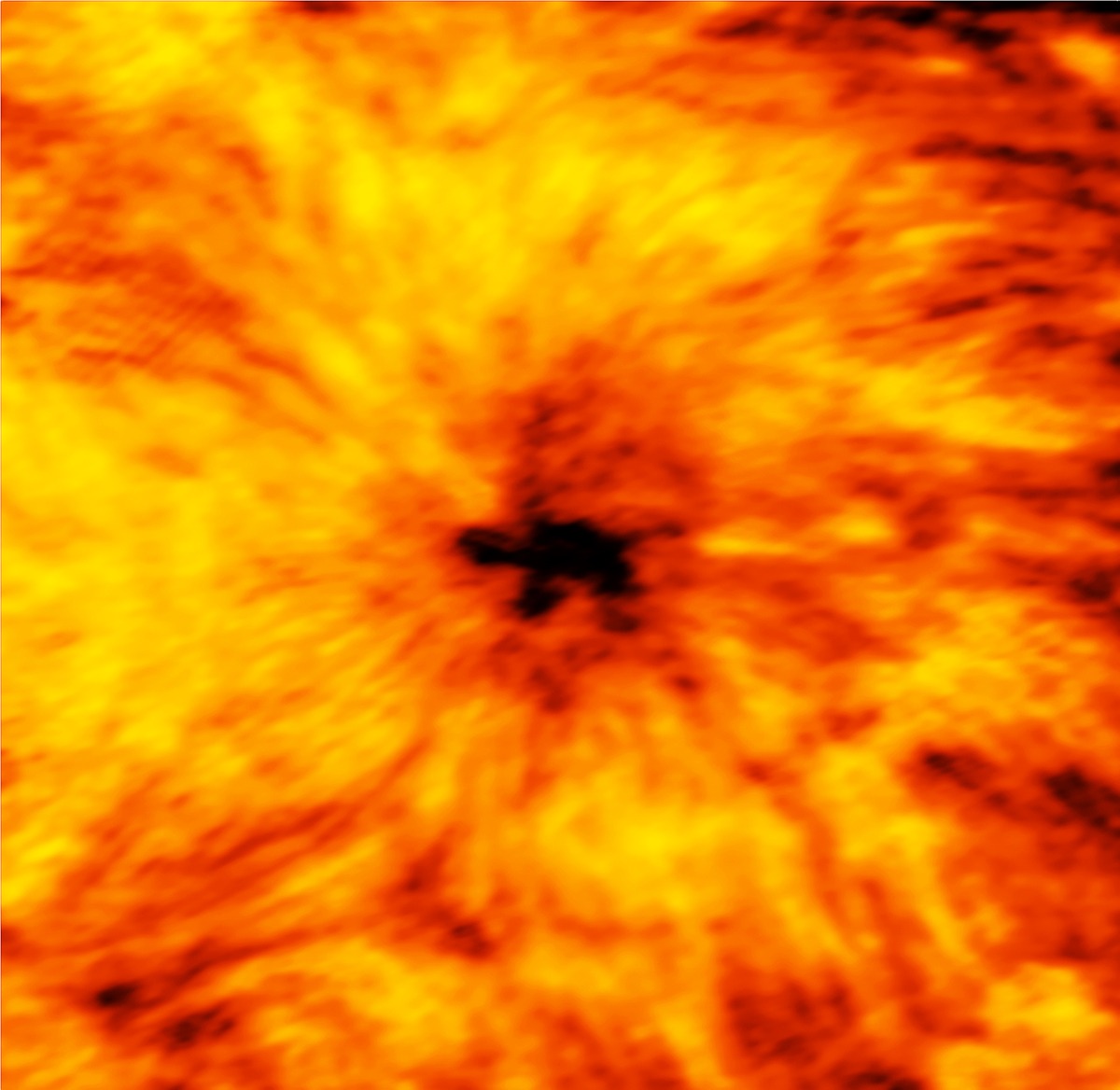
A shadowy turtle twice the size of Earth swims across the sun in new images from the ALMA radio telescope in Chile, viewing the sun for the first time and documenting the area right above its visible surface.
The sprawling ground-based telescope is more usually used to probe radio waves released by some of the universe's most distant galaxies. In this case, though, it picked up waves released by the sun's chromosphere, which is the area just above the surface you see in visible light. Images returned by detecting radio waves at 2.5 and 3 millimeters show conditions at two different chromosphere depths — and the new views could lend more insight into the sun's physics.
"We're accustomed to seeing how our sun appears in visible light, but that can only tell us so much about the dynamic surface and energetic atmosphere of our nearest star," Tim Bastian, an astronomer at the National Radio Astronomy Observatory in Virginia, said in a statement. "To fully understand the sun, we need to study it across the entire electromagnetic spectrum, including the millimeter and submillimeter portion that ALMA can observe."
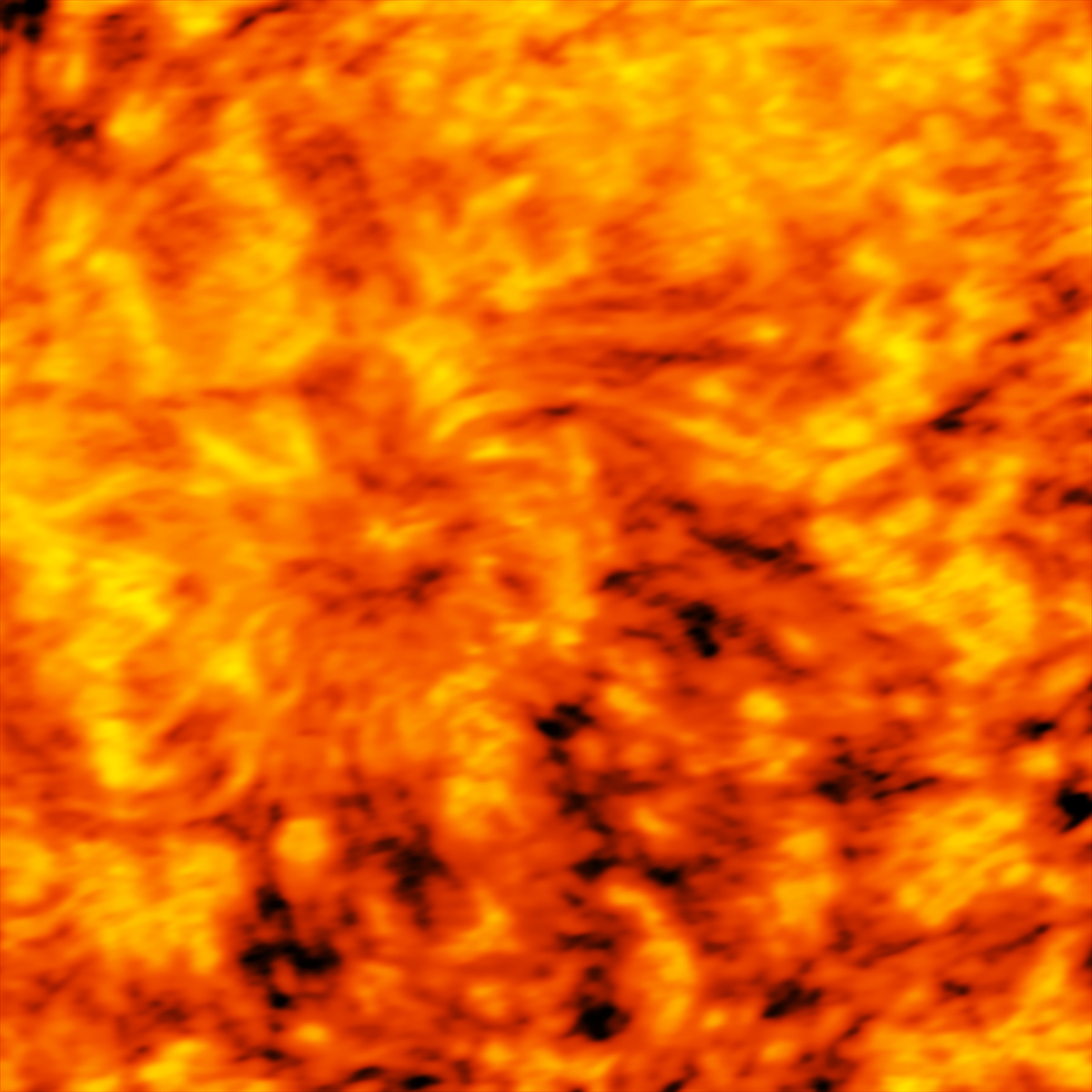
ALMA's antennas were specially designed to accommodate looking at the fierce light of the sun, according to a European Southern Observatory (ESO) statement, but this was the telescope's first foray into measuring the orb's radio emissions. It is the first observatory with ESO as a partner that can investigate the sun.
Sunspots develop on the sun's surface when its magnetic field lines warp and poke through the surface of the plasma, creating a cooler area. That magnetic activity can also lead to solar flares and coronal mass ejections that send the sun's material flying outward.
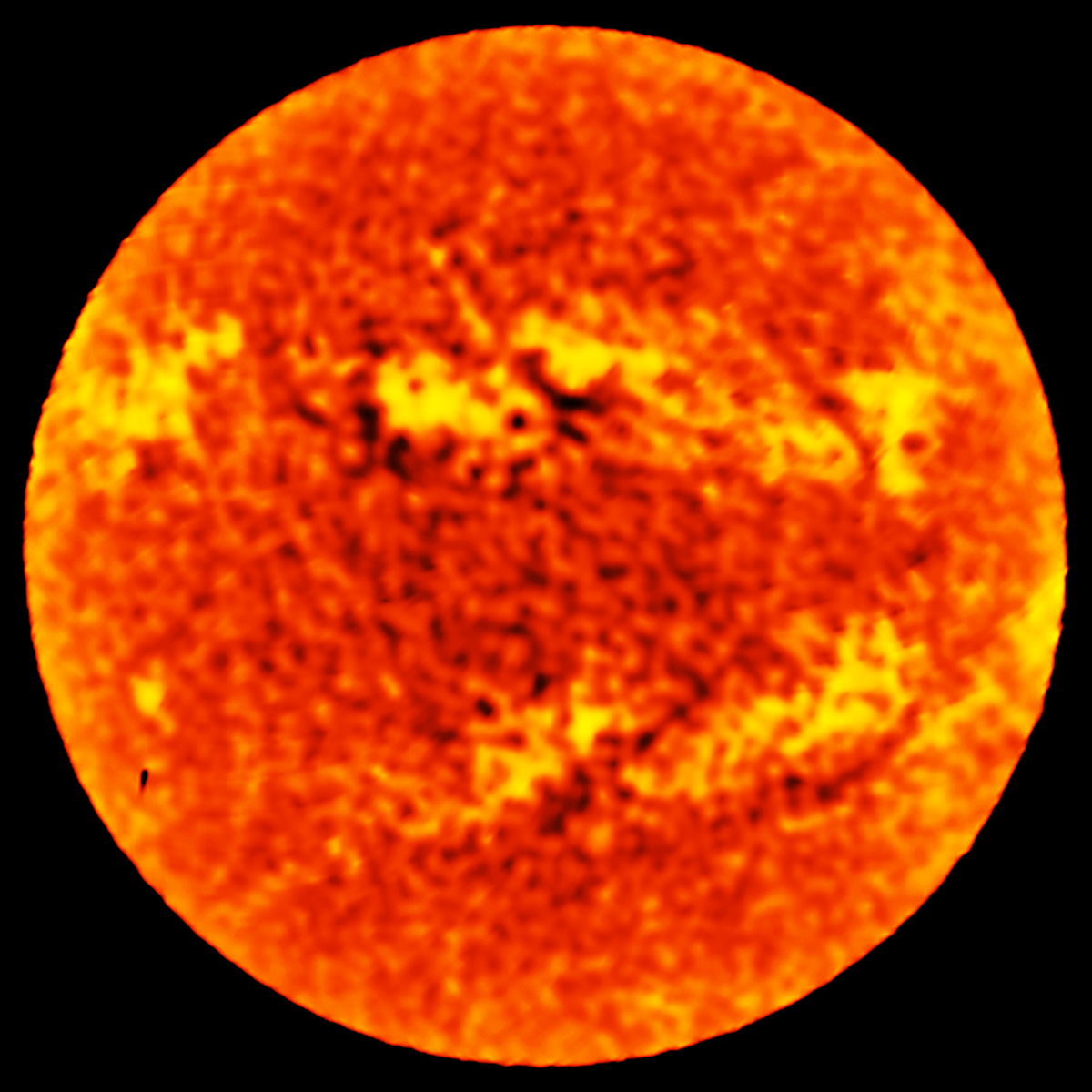
Email Sarah Lewin at slewin@space.com or follow her @SarahExplains. Follow us @Spacedotcom, Facebook and Google+. Original article on Space.com.
Get the Space.com Newsletter
Breaking space news, the latest updates on rocket launches, skywatching events and more!
Join our Space Forums to keep talking space on the latest missions, night sky and more! And if you have a news tip, correction or comment, let us know at: community@space.com.

Sarah Lewin started writing for Space.com in June of 2015 as a Staff Writer and became Associate Editor in 2019 . Her work has been featured by Scientific American, IEEE Spectrum, Quanta Magazine, Wired, The Scientist, Science Friday and WGBH's Inside NOVA. Sarah has an MA from NYU's Science, Health and Environmental Reporting Program and an AB in mathematics from Brown University. When not writing, reading or thinking about space, Sarah enjoys musical theatre and mathematical papercraft. She is currently Assistant News Editor at Scientific American. You can follow her on Twitter @SarahExplains.

